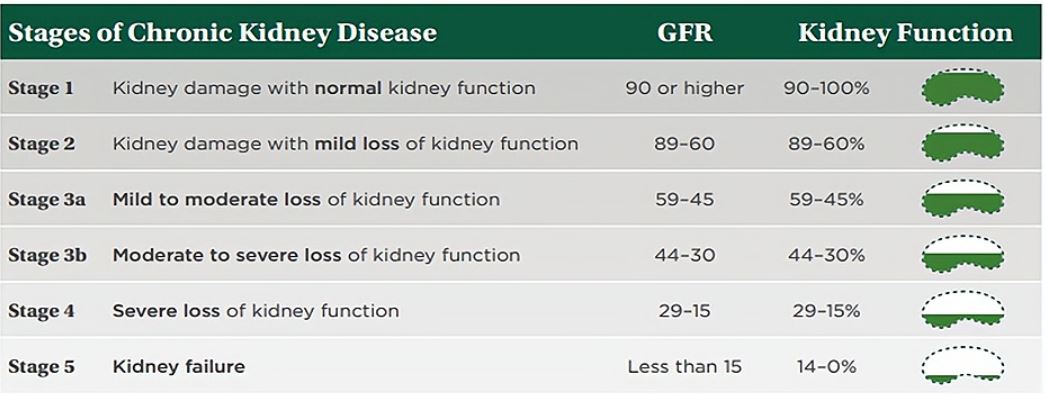The Advantage | ISSUE 2 | 2023
For Our Members
Posted 07/05/23
For more of The Advantage member newsletter
The Advantage - Issue 2, 2023 (PDF) - July 5, 2023
In this edition:
Facing a Common Challenge Together
A Note from Dr. Marty
Consider your hometown. Picture “Main Street.” Now imagine that the people living on one side of the street are taking their medications as instructed…and those on the other side are not. In fact, this is reality in America. Only about half of our population is taking their long-term medications as prescribed.*
If you’re a member of that 50% having trouble following their medication directions, it isn’t a failure—rather, it’s a common challenge that needs to be met! You’ve agreed to a treatment plan with your PCP or specialist, but the “taking the pills” part hasn’t gone according to plan. That’s ok! The first step to getting back on track is to figure out why: Has something changed in your life? Are there too many pills to deal with? Are you unsure about when and why you’re taking them? Do they make you feel lousy (side effects)? And what about the cost?
Inside, you’ll find information to help you overcome common barriers to safely and effectively taking your medications. I urge you to learn more and take advantage of the resources available to help you get the most out of your care.
Wishing you the best of health this summer,

Martin Wesolowski, DO, MBA
Vice President, Medical and Pharmacy Management
Update Your Contact and Provider Information
As a partner in your health care, we want to ensure there are no barriers to you getting the care you need. Please be sure to contact Member Services if you have any changes to your address, phone number, or email. You can call Member Services or use our member portal to update your primary care provider information if you make a change.
Having your correct contact information helps us ensure you receive timely communication on plan benefit updates, authorization decisions, and other health care needs. It’s also important to notify your health care providers of any contact information changes to avoid delays in receiving provider referrals or other important communications from your provider.
Good Health Care Is More than Sick Care
Benjamin Franklin is credited with saying “an ounce of prevention is worth a pound of cure.” His reference was to fire prevention in Philadelphia in 1736, but his words hold just as true for health care today.
Many people only see their doctor when a health issue has worsened to the point where it can’t be managed at home. Unfortunately, this practice can lead to more serious problems. Routine preventive care, like annual wellness visits and physical exams, can help avoid diseases or find them at an earlier stage when they may be more manageable.
Primary care is the gateway to preventive care, including ordering cancer screenings, providing immunizations, reviewing labs and vital signs, or providing disease-prevention education. Routine preventive care visits can be key to avoiding many sick care visits in later years.
We encourage you to book this year’s annual preventive care visits now if you haven’t already. When scheduling, ask your primary care provider’s office about combining your Medicare annual wellness visit (a conversation about health goals and preventive care) with your annual physical exam (hands-on examination) into one longer “Comprehensive Visit.” To support your best health, your Generations Advantage plan covers preventive care exams and screenings at a $0 in-network member copay.
Emergency Room Visit or Hospital Stay?
Always Follow Up Quickly with a Primary Care Visit
After a visit to the ER or a hospitalization, your health often still needs extra attention. You may have experienced a new medical condition or a worsening of a condition that will change your previous routine. You may also have a change in your medications.
Having a follow-up visit with a primary care provider very soon after an ER or hospitalization discharge is a very important next step in taking the best care of your health. Research shows that timely follow-up after an ER visit was linked with a 51% decrease in deaths within 30 days of discharge.*
Timing is everything. Because timing is key for positive outcomes, best practice is to see a provider within seven days of being discharged. This is especially true if you are living with multiple chronic conditions like COPD, heart disease, chronic kidney disease, or dementia, as these conditions can affect your recovery. If you can’t see a primary care provider within seven days, 30 days is the longest you should delay a hospitalization follow-up visit.
Although it would be best to see your regular primary care provider for follow-up, they may not be available within the recommended timeframes. It’s more important that you be seen very soon after your discharge, so making a timely appointment with any provider within your primary care office is highly recommended. They will be able to identify any concerns or complications you may be experiencing after your hospital visit.
Why is a timely follow-up visit after a hospitalization or emergency room visit so important?
A follow-up visit allows your primary care office to do the following:
- Be aware of the details of your recent emergency care or hospitalization.
- Determine if the treatment you were prescribed is effective or if you are having any complications from new medications or treatments prescribed.
- Provide continued education around new medications, diagnoses, or treatments.
- Take over responsibility of prescribing any new medications that you will continue to take.
- Support you with any further testing or referrals that may be necessary.
One study by the New England Journal of Medicine (2020) found that ambulatory follow-up after an emergency department visit was associated with a 51% decrease in mortality at 30 days; the study look at 9.5 million visits to 4728 emergency departments by Medicare beneficiaries.
Heading Out for Summer Fun?
Don’t Forget Your Over-the-Counter Benefit
It’s time to stock up on those summertime items that help protect you from the sun and stay healthy outdoors! All Generations Advantage members receive a quarterly amount to purchase select, CVS-brand, over-the-counter (OTC) items.
Popular OTC summer items include allergy medication, sunscreen, bandages, and aloe vera. You can also find everyday OTC essentials like vitamins, digestive health aids, and pain relievers, too! For information on how to use your OTC benefit or for a list of covered items, please visit our website at MartinsPoint.org/OTC
Help with Managing Your Medications
One of the most important things you can do to protect your health is to take all your medications as directed. As your health plan, we want to make sure you have the information and support you need to manage your medications. One of our health plan pharmacists may send you a letter or email or call to talk with you about ways to make sure you are able to follow your medication treatment plan. If you receive a letter or email, we encourage you to call one of our health plan clinical pharmacists. They, along with your doctor and your pharmacy, are on your team and are here to support you!
Visit MartinsPoint.org/MedicationTracker. Learn more about the Medication Therapy Management program and download a Personal Medication List to keep track of your prescriptions.
Get your Medication Explanation of Benefit (EOB) Documents Online
If your Martin’s Point Generations Advantage plan includes Part D Prescription Drug coverage, you can choose to receive your monthly medication EOBs online instead of by mail. Paperless medication EOBs provide the same information in the same format as the printed ones you may currently receive, and they’re faster and more convenient.
To get started with receiving online medication EOBs, visit Caremark.com/paperless to sign up. There you can register through their portal to access a secure, online prescription management center available 24 hours a day, seven days a week. You can also register to manage your prescriptions, monitor out-of-pocket spending, and get information about your medications.
The medication EOB shows what you, your plan, and others paid for drugs during a particular period. It also tells you what stage of Part D Prescription Drug coverage you are in and how much more you need to spend to move to the next stage of coverage. This can help you see if you are approaching the coverage gap or “donut hole” stage where you pay more for your medications. If you have questions about signing up for online medication EOBs, help is available by calling CVS Caremark at the number on the back of your Generations Advantage member ID card.
Taking Multiple Medications Safely
What You Need to Know about the Risks of Polypharmacy
As adults get older, many find themselves taking several medications as they manage multiple health conditions. The use of multiple medications—which can include prescription drugs, over-the-counter (OTC) products, and herbal supplements—is called “polypharmacy.” It is a growing concern for older adults because it can result in increased risk for side effects, interactions between drugs, interactions between drugs and diseases, and other medication-related problems.
If you are taking multiple medications, it’s important to make sure you are taking them all safely. Here are a few recommendations for doing so:
- For each medication: Make sure you understand what it is, what condition it is treating, and how to take it correctly. We encourage you and/or your caregiver to ask your provider or pharmacist ANY questions you may have about your medications.
- Ask your provider if any of your current medications could possibly be tapered or stopped. This is also known as “deprescribing.”
- Take all medications as prescribed (taking the right dose, at the right time, and as directed).
- Before starting any new prescription drug, or OTC or herbal product, ask your pharmacist or provider about any possible interactions, side effects, and whether any other medications need to be stopped.
- Always report any problems or negative side effects to your providers.
- Keep an updated medication list on hand and share it with all your health care providers.
Watch for Side Effects: Some medications, when used together, can increase the risk for side effects. Some medications, on their own, are more commonly associated with side effects, such as prescription medications to treat pain, anxiety, or depression; some antihistamines—such as diphenhydramine (Benadryl®); and muscle relaxants. Make sure to check your medicine cabinet and be aware of the possible negative effects associated with any of your medications.





